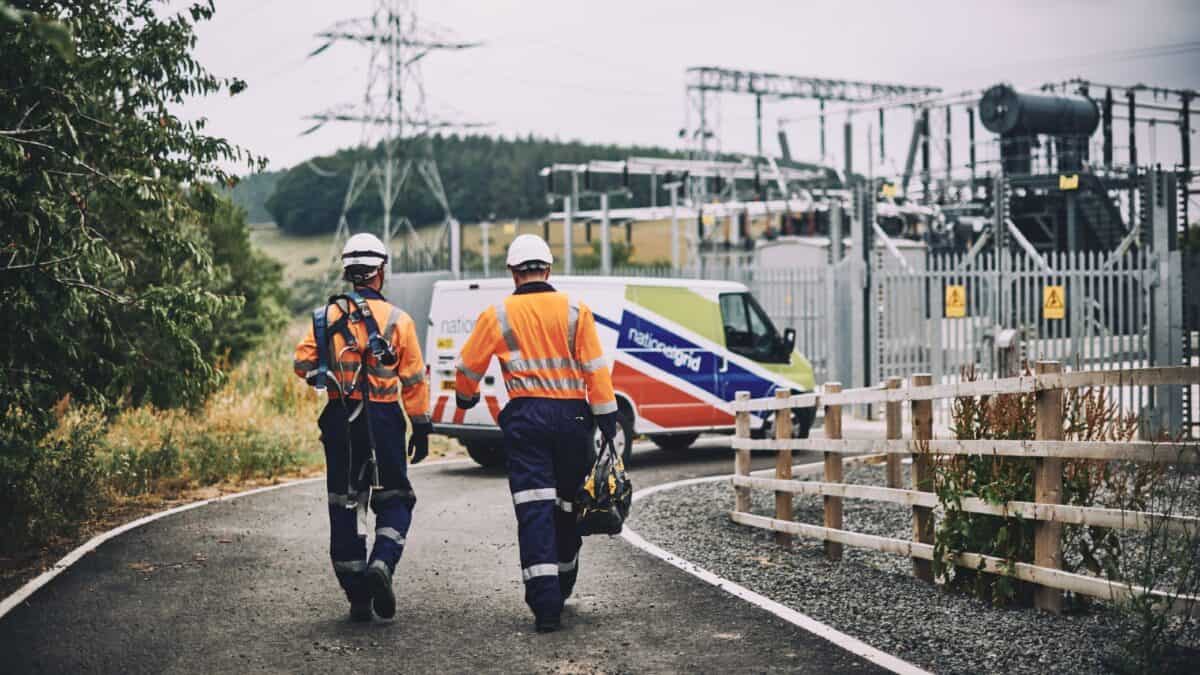Image source: National Grid plc
National Grid (LSE: NG) shares paid a dividend in the fiscal year ended 31 March 2024 of 58.52p. This means a yield on the current £10.55 share price of 5.6%.
By contrast, the average FTSE 100 yield is presently 3.6%, and the FTSE 250’s is even lower at 3.3%.
£11,000 – the average UK savings amount – would buy 1,043 shares in the electricity and gas transmission and distribution giant.
These would pay £616 in dividends in the first year and it would rise to £6,160 after 10 years on the same average yield, then to £18,480 after 30 years.
The key to supercharging returns
This is clearly a better yield than can be had from standard UK bank savings accounts. However, it could be much more by making one simple adjustment to the dividends paid out.
Specifically, using them to buy more National Grid shares would produce exponentially higher returns than withdrawing them from the investment account each year.
Doing this – called ‘dividend compounding’ – would make an extra £8,232 after 10 years, not £6,160. And after 30 years on the same 5.6% average yield, the additional return would be £47,791, rather than £18,480!
By that time, the total investment of £58,791 would be paying £3,292 every year in dividends.
How does the business look?
A company’s share price and dividend are powered by earnings growth over time.
In National Grid’s case, a risk to this remains the heavy investment required to maintain its current power network. Further major funding is also necessary for its energy transition programme.
That said, it expects this expenditure to boost its asset growth to around 10% a year over that period.
Additionally, consensus analysts’ estimates are that its earnings will increase 11.8% to the end of its fiscal year 2027. Earnings per share are expected to increase by 7.3% a year to that point. And return on equity is forecast to be 9.9% by that time.
In its 2024 results released on 23 May, underlying operating profit rose 4% year on year to £4.8bn. This was driven by revenue growth in its UK electricity transmission business and by higher rates in its US operations.
Aside from its UK business, the firm has more than 20m electricity, natural gas, and clean energy customers in New York and Massachusetts.
Will I buy the shares?
After I turned 50 a while back, I have focused on stocks that generate me a very high dividend income. These include M&G, Phoenix Group Holdings, Legal & General, and abrdn, with an average yield of around 9%.
So there is little point in me adding National Grid on this basis at its present 5.6% yield.
However, if I were at an earlier stage in the investment cycle, the firm would be a much more attractive package.
In addition to its good yield, it also has strong growth prospects in the UK’s core infrastructure, in my view. Additionally, I think its investment in the global energy transition will pay off over time, in the UK, US, and European markets.
On that basis, I would buy it now if I were even 10 years younger.
Credit: Source link













